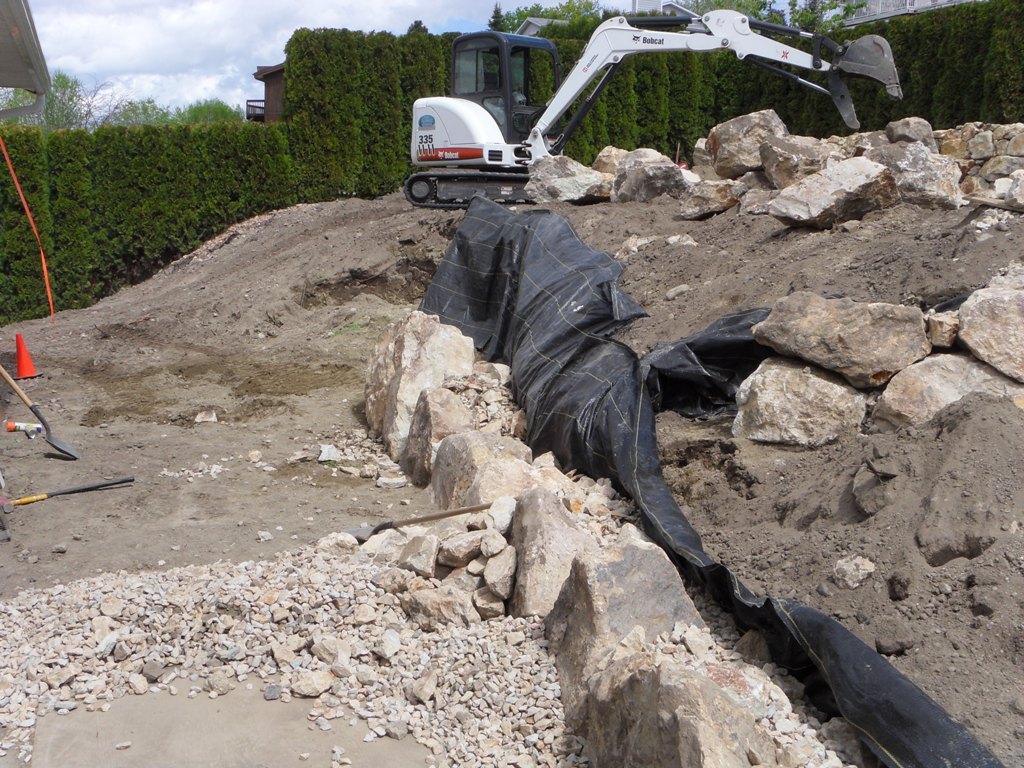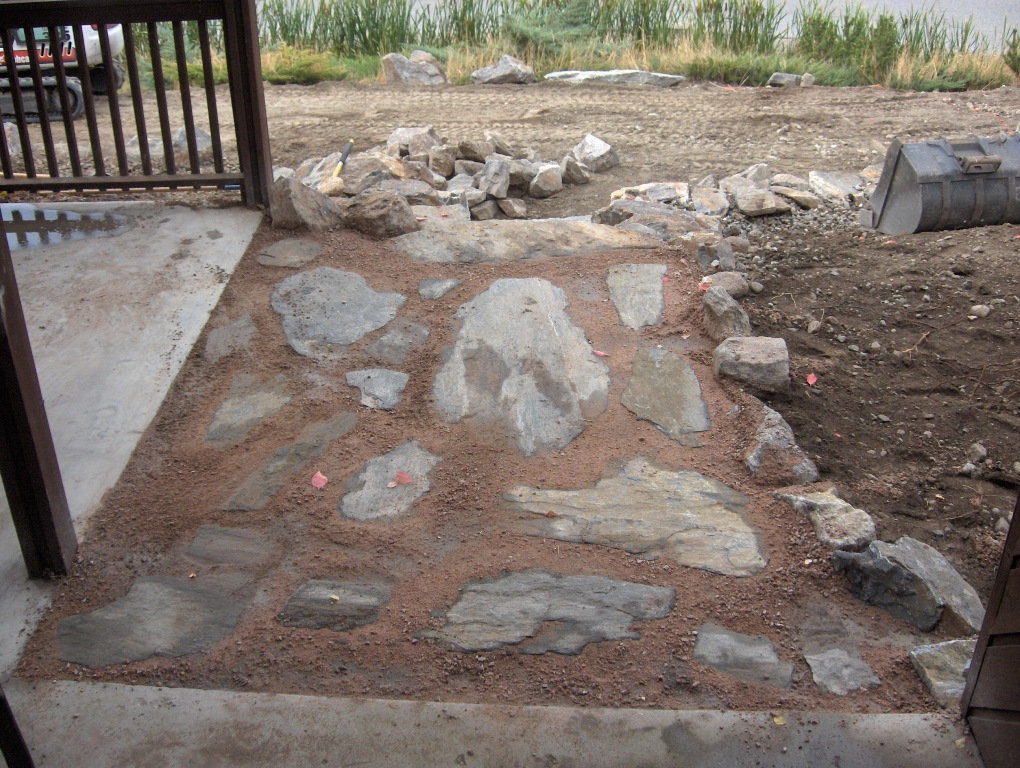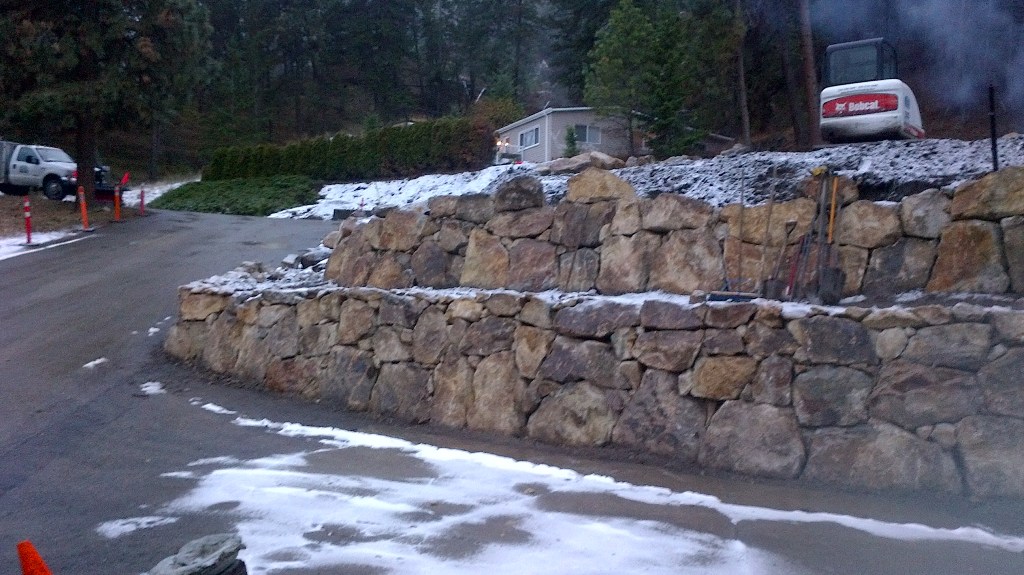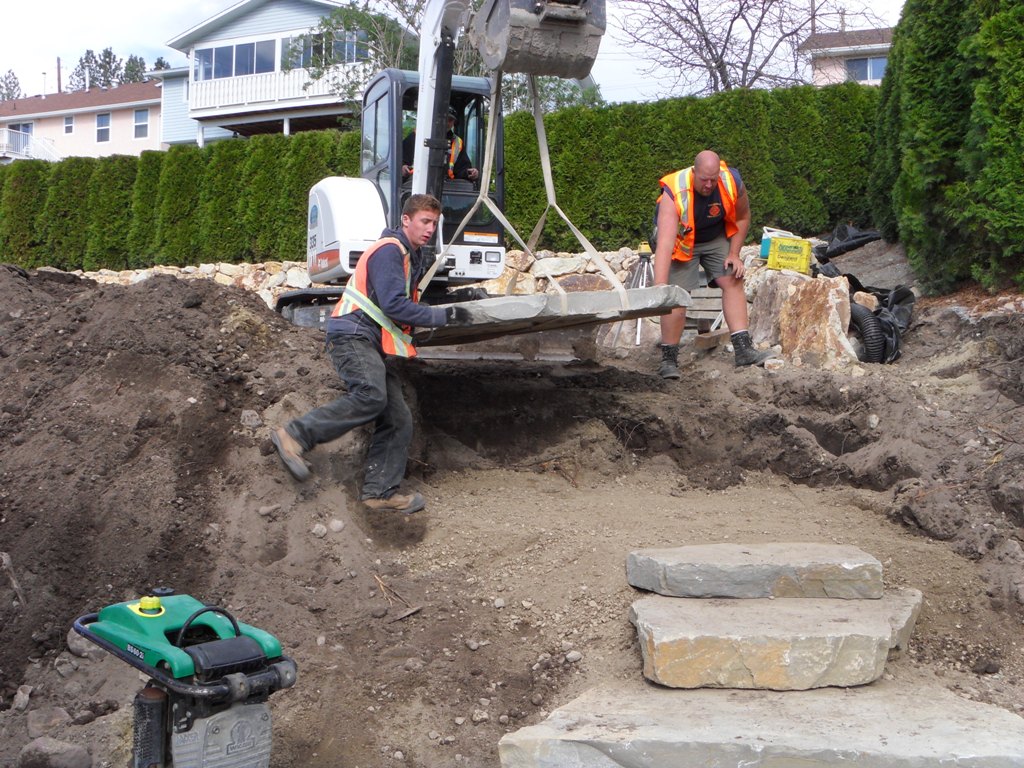Retaining Walls
Are you looking for another dimension to your property? With many different methods and styles of bank retention, there is also important factors that need to be considered when choosing which one will best suit your site and budget. If built correctly, a dry-stacked rock wall may have a place in your design and will enhance a more natural look compared to a concrete or allen block wall.
For more space in your back yard, or to keep that bank from washing away your back yard, Contact Us.
Deano’s Landscaping & Excavating
15110 Old Mission Rd
Lake Country, BC V4V 2A9
Canada250-548-3041
[email protected]Providing Landscaping & Excavating Services to Kelowna, Vernon and the Greater Lake Country Area. Call Today!
Good afternoon everybody. I’m +Dean Nisbet, Deano’s Landscaping & Excavating. And I’m gonna talk about the proper construction of a rock wall. We’ve been on this particular project now for about five weeks, about 2500 square feet of rock when we’re totally done. We’ve got about three days left and so what I wanted to you talk about is proper construction.
We have some grain rock here, we’ve got a variety of chunk, and in behind this wall that I’m gonna start to show you, there’s big O and there is a lot of dry stack. And that’s the proper construction of a wall, so you get drainage. So we put filter fabric in behind and if water issue is coming as a spring issue or something that an irrigation line might eventually break. We always try to prepare for the worst, so we put big O on the bottom.
So I’m gonna take you through one of our rock walls that we’ve built and kinda show you from this perspective. There is a particular wall, that’s about 5 feet high. We’ve got mid rocks that are base rocks that start at the bottom, sorry, and come right into what I call our midline. So the midline being from here up and then these are our mid caps. When these rocks are put into their proper placements, they’re there forever. I’ve seen a lot of rock walls built incorrectly and I’ve actually repaired a lot of walls that have been incorrectly built and have fallen or failed due to not the proper dry stacking behind.
What happens is the material that is behind if it wasn’t protected by the filter cloth, it starts to leach out and will start to bleed through the walls. So the wall has to breathe properly, so if there is any water that comes down after the spring or winter, we’re gonna make sure that wall drains, never builds up pressure or have any surcharge to overpower it. So with that we’re gonna move on to the next area and go from there.
If you want an ideal build which we call a number one build where you’re actually using one piece of equipment where the rock is right there. We dump the rock, we have our drain rock and stack rock all placed behind us. This particular sight is pretty big now, but when… If you would have seen it two weeks ago, there was 10 loads of rock on here. And you can see we’re now getting down to 2 foot and smaller rock, but we had 3 and 4-foot high rocks in here. So it’s very important to have a nice clean site. I always tell people if you’re building a home, do your Hardscape first. If you do that, you’re not gonna have to work around foundations and other workers. You’re gonna be more productive and we can usually use one, maybe two, machines on the site when the rock’s dropped off.
So we started with building this back wall and right behind the loader here, you’ll start to see from back there these rocks have been put in a manner that they look like they have been placed there like a puzzle. They follow the lines, base rock, mid rock. A base can go into the midline, but generally not all the way to the cap or it will look out of proportion. Then we finish with cap and then in behind, our dry stack is probably 2-1/2 feet behind us. So this wall would never come down in a million years. Then it leads down and you can see it follows the actual natural land and tapers out to nothing. So with that we’re gonna go to our last and final wall of rock. We’re gonna go down to the bottom and show you a two-tier wall. And we’re quite proud about that, so we’d like to show you that.
So now we’re looking at our two-tier wall. We’re actually just working up the side here now. The wall that comes in here at about a 2-1/2 to 3-foot level and in behind, you can actually see what I was talking about earlier. Fabric protecting any of the dirt or organic matter. We’ve got a lot chunk and grain in there, where right now we’ve actually put some chunk and grain, now we’re ready for more chunk. Chunk rock, what I’m referring to is this stuff. And if it’s done properly, the results you can have are phenomenal. And if you actually start to look at this now, two-tier wall, about 4 to 5 feet, and when it’s washed it’s gonna look phenomenal. And with that, if you have any more questions go to our website [https://deanoslandscaping.com], we’d be happy to answer them. Thanks again, Deano’s Landscaping.









